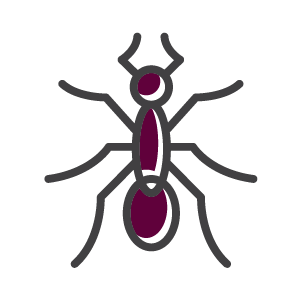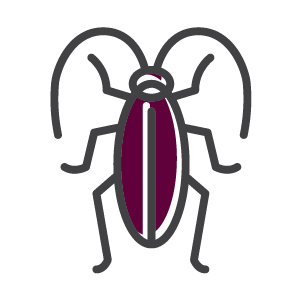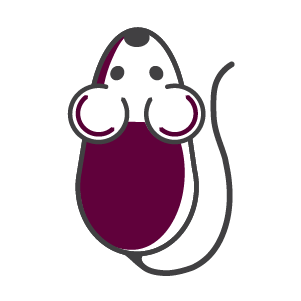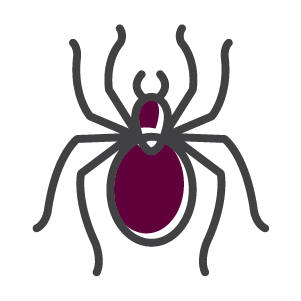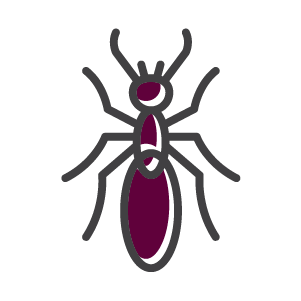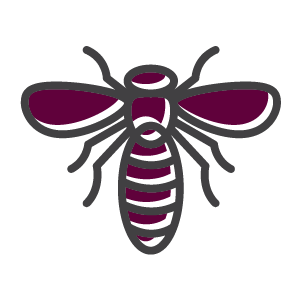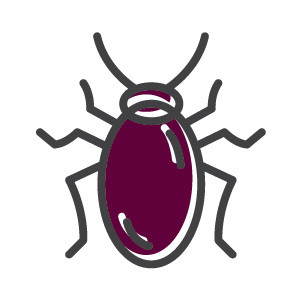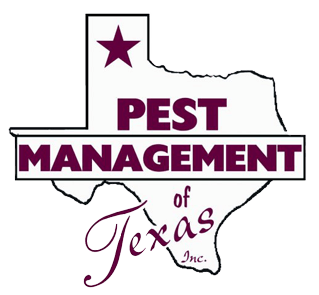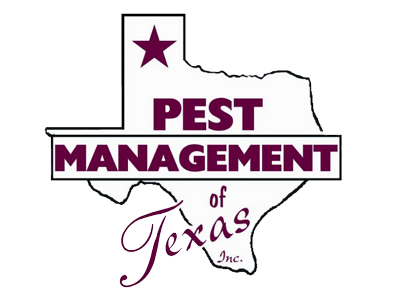Bees & Wasps
Bees & Wasps Control
These stinging insects live in hives. Destroying the hive is one method to remove them, however, this can be quite dangerous. These pest insects will swarm and protect the hive. The stings from these insects can cause serious health issues like painful swelling, infections, nausea, and in rare cases even death from an allergic reaction. Hiring a professional exterminator in Dallas is the safest and most effective way to remove bees, hornets, wasps, and yellow jackets from your home.
How Did I Get Bees & Wasps?
Bees, hornets, wasps, and yellow jackets are always looking for the perfect place to build their hives. They like to build nests or hives inside attics and gutters, or under decks or eaves. These locations are desirable to the insects as they provide natural structural protection.
Why Is It So Difficult To Get Rid Of Bees & Wasps?
Killing these stinging insects is potentially dangerous. Not only can they attack, but the locations of the nest and hives may often be in high or difficult to reach areas, putting you at an added disadvantage when they respond to your attempts to destroy the hive. Chemical sprays may not kill these insects and just further aggravate them to attack. It is best and safest to hire a reputable pest control company.
What Are The Signs Of An Bees & Wasps Infestation?
- You see will see them flying nearby
- You or someone in your family being stung
- You may hear bees, hornets, wasps, and yellow jackets buzzing around
- You may even find them inside your home
How Can I Prevent A Bees & Wasps Infestation
Pest Management of Texas, Inc. will help educate you regarding stinging insect control to help prevent a repeat infestation as much as possible.
4 Types Of Bees & Wasps Found In Dallas, TX
Carpenter Bee
Size: ¾" to 1"
Color: Dark yellow and black
How to Recognize: Resemble honey bees, but much larger.
Habitat: Nest in wood, preferably weathered and unpainted, and can often be found hovering around the eaves of houses, or wood fences.
Behavior: Bore round holes into wood to nest, but do not cause serious structural damage unless a large number of them nest in a particular area for a long period of time. Males can be aggressive but are incapable of stinging.
Honey Bee
Size: ½"
Color: Yellow and dark brown
How to Recognize: These hairy bees can be found hovering near flowering plants, foraging for the pollen and nectar to produce honey.
Habitat: Usually nest inside tree cavities, but can also be found beneath rock formations.
Behavior: Are not typically aggressive, but will attack anything that threatens the colony. Their sting can be painful and cause a serious reaction in allergic individuals.
Paper Wasps
Size: ½” to 1”
Color: Reddish-brown to dark red to orange
How to Recognize: Recognizable by their color, and the paper-like, many chambered nests that they build.
Habitat: Nests are usually attached to the underside of support (i.e. an eave, window, etc.) and hang down.
Behavior: Predators who feed on insects, spiders, and caterpillars. They are protective of their nests and will defend against invaders with a painful sting.
Yellow Jackets
Size: 1/2" to 5/8"
Color: Yellow and black
How to Recognize: Often confused with honeybees because of their coloring, but have a thin waist.
Habitat: Nest in tree stumps, fallen logs, or on the ground.
Behavior: Prey on a variety of insects, but also forage for foods people eat, especially sweets and meat. They are very social insects that will aggressively defend their nests. Their stings can be quite painful and can cause serious reactions in those who are allergic. to feed the other members on a regular basis. The reproductives swarm at least once per year.
We Specialize In All Types Of Business Including:
Apartments
Office Buildings
Government
Nursing Homes
Assisted Living
Contractors
Day Cares
Retail Stores
Multi-tenant
Churches
Grocery Stores
Warehouses
Restaurants
Schools
Hospitals
Food Distribution Warehouses
Hotels & Motels
Pest Management of Texas, Inc.
6316 Industrial Drive
Sachse, TX 75048

